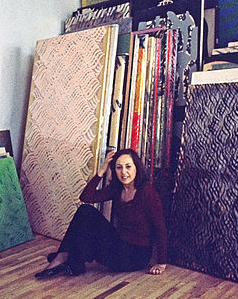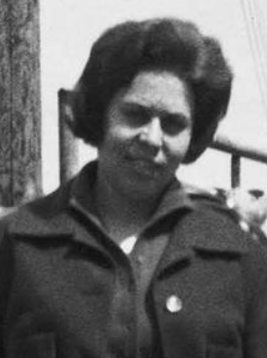
Arte Povera was an art movement that took place between the end of the 1960s and the beginning of the 1970s in major cities throughout Italy and above all in Turin. Other cities where the movement was also important are Milan, Rome, Genoa, Venice, Naples and Bologna. The term was coined by Italian art critic Germano Celant in 1967 and introduced in Italy during the period of upheaval at the end of the 1960s, when artists were taking a radical stance. Artists began attacking the values of established institutions of government, industry, and culture.

Jannis Kounellis was a Greek Italian artist based in Rome. A key figure associated with Arte Povera, he studied at the Accademia di Belle Arti in Rome.
Germano Celant was an Italian art historian, critic, and curator who coined the term "Arte Povera" in the 1967 Flash Art piece "Appunti Per Una Guerriglia", which would become the manifesto for the Arte Povera artistic and political movement. He wrote many articles and books on the subject.

Alighiero Fabrizio Boetti known as Alighiero e Boetti was an Italian conceptual artist, considered to be a member of the art movement Arte Povera.

Contemporary Greek art is defined as the art produced by Greek artists after World War II.
Marisa Merz was an Italian artist and sculptor. In the 1960s, Merz was the only female protagonist associated with the radical Arte povera movement. In 2013 she was awarded the Golden Lion for Lifetime Achievement at the Venice Biennale. She lived and worked in Turin, Italy.
Alyona Azernaya, born March 9, 1966, Ekaterinburg, Russia is a contemporary Russian naïve painter. Her name has been transliterated from Russian as : Alyona Azernaya, Alena Azernay, Aliona Azernaia, Elena Azernaya, Aliona Aziornaya.
Contemporary African art is commonly understood to be art made by artists in Africa and the African diaspora in the post-independence era. However, there are about as many understandings of contemporary African art as there are curators, scholars and artists working in that field. All three terms of this "wide-reaching non-category [sic]" are problematic in themselves: What exactly is "contemporary", what makes art "African", and when are we talking about art and not any other kind of creative expression?

Carolyn Christov-Bakargiev is an Italian-American writer, art historian and exhibition maker who served as the Director of Castello di Rivoli Museo d'Arte Contemporanea in Turin in 2009 and from 2016 to 2023. She was also the founding Director of Fondazione Francesco Federico Cerruti from 2017 to 2023. She was Edith Kreeger Wolf Distinguished Visiting Professor in Art Theory and Practice at Northwestern University (2013-2019). She is the recipient of the 2019 Audrey Irmas Award for Curatorial Excellence. She is currently Honorary Guest Professor at FHNW University of Applied Sciences and Arts Northwestern, Switzerland. She has lectured widely at art and educational institutions and Universities for the Arts, including the Goethe University, Frankfurt; Harvard University, Cambridge; MIT, Boston; Jawaharlal Nehru University, New Dehli; Cooper Union, New York; The Courtauld Institute of Art, London; Monash University, Melbourne; Di Tella University, Buenos Aires; Northwestern University, Chicago, and UNITO, Università di Torino, Turin.

Carla Accardi was an Italian abstract painter associated with the Arte Informale and Arte Povera movements, and a founding member of the Italian art groups Forma (1947) and Continuità (1961).

Anatoly Osmolovsky, is a Russian visual artist, performer, theorist, editor and teacher. He resides in Moscow where he sculpts wood. Osmolovsky grounds his art in theory and supports his work with self-published writings in Radek (1993) and Base (2010) magazines and by teaching art history.
Giovanni Anselmo was an Italian artist, who emerged after World War II within the art movement called Arte Povera. His most famous artwork is Untitled (1968), a piece of art representing time and nature.
Tatiana Vasilyevna Badanina is a Russian visual artist.
Alexander Alexandrovich Morozov is a Russian artist based in St. Petersburg.
Daina Augaitis is a Canadian curator whose work focuses on contemporary art. From 1996 to 2017, she was the chief curator and associate director of the Vancouver Art Gallery in British Columbia.

Sheila Pinkel is an American visual artist, activist and educator whose practice includes experimental light studies, photography, conceptual and graphic works, and public art. She first gained notice for cameraless photography begun in the 1970s that used light-sensitive emulsions and technologies to explore form; her later, socially conscious art combines research, data visualization, and documentary photography, making critical and ethical inquiries into the military-industrial complex and nuclear industry, consumption and incarceration patterns, and the effects of war on survivors, among other subjects. Writers identify an attempt to reveal the unseen—in nature and in culture—as a common thread in her work.
Sonia Amalia Romero is an American artist, she is known for her printmaking, mixed media linocut prints, murals, and public art based in Los Angeles. She is known for depicting Los Angeles, Latin American imagery, and Chicano themes in her work.

Taus Makhacheva is a contemporary artist from Russia. She creates works that explore the restless connections between historical narratives and fictions of cultural authenticity. Often humorous, her art considers the resilience of images, objects and bodies emerging out of stories and personal experiences. Her methodology involves reworking of materials, landscapes and monuments, pushing against walls, opening up ceilings and proliferating institutional spaces with a cacophony of voices.

Katy Stephanides was one of the leading artists in Cypriot modernist movement in the second half of the 20th century and the first decade of the 21st century. She held her first solo exhibition in 1972 featuring abstract geometric paintings and continued exhibiting through 2003. She has works in the collections of the Byzantine Museum of the Archbishop Makarios III, the Loukia and Michalakis Zambelas Art Museum, the Municipal Art Gallery of Limassol and the State Gallery of Contemporary Cypriot Art.
Magazzino Italian Art is a museum and Research Center dedicated to advancing scholarship and public appreciation of postwar and contemporary Italian art in the United States. The museum was founded by Nancy Olnick and Giorgio Spanu with the mission to share works of the group of Italian artists who exhibited together in the late 1960s and early 1970s, affiliated with the art movement of Arte Povera, with American audiences. Magazzino opened to the public on June 28, 2017, with an exhibition dedicated to the influence and legacy of Margherita Stein, a late Italian dealer associated with artists active in Arte Povera circles and beyond. The museum is free and open to the public.









